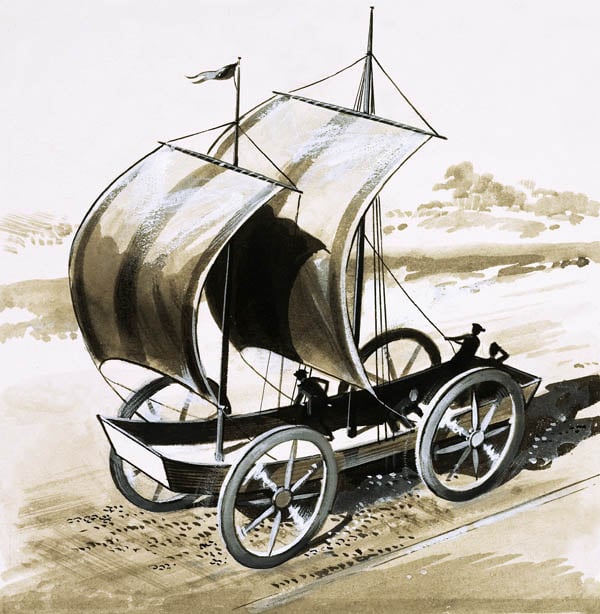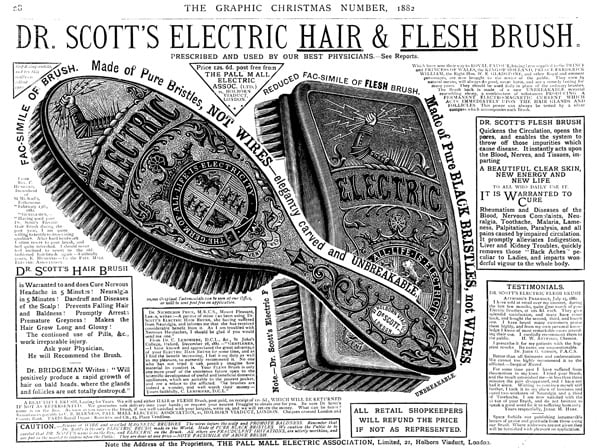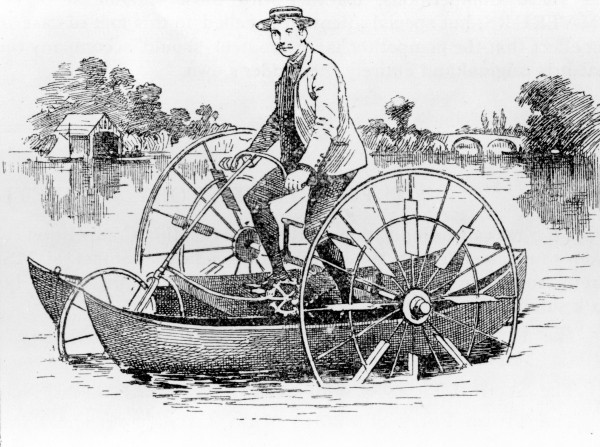
Madcap Inventions
Here are some of history’s most weird and wonderful inventions captured by photographers, film-makers and illustrators in the Bridgeman archive
1. The Land Ship
Dr Wilkins, Bishop of Chester was an advocate of the new ‘experimental’ approach to science and one of the founders of the Royal Society. In 1648 he published a book dealing with projected designs for submarines, flying machines and a land yacht, which he proposed to be driven by two sails.
The Land Ship, invented by Dr Wilkins, Bishop of Chester, in 1648, English School, (20th century) / © Look and Learn / Bridgeman Images
2. Treadmill Bus
Invented in 1824 by William Francis Snowdon, the treadmill bus was powered by horses on the lower deck.
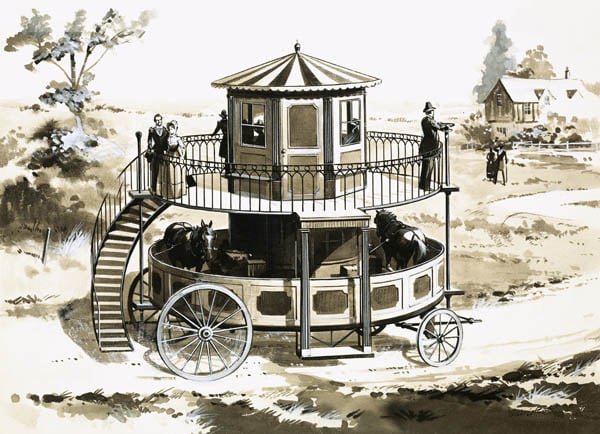
The Treadmill Bus, invented in 1824 by William Francis Snowdon, English School, (20th century) / © Look and Learn / Bridgeman Images
3. Dr Scott’s Electric Hair and Flesh Brush
Dr. Scott, an Englishman, was the most prolific advertiser and maker of “electric hair brushes” and related quackery in America, in the 1880’s. The Scott brushes and other devices all contain slightly magnetized iron rods in their handles, thus, the curative power could only have been provided by magnetism. Miracle cures included constipation, diseases of the blood and paralysis.
Advertisement for Dr Scott’s Electric Hair and Flesh Brush (engraving), English School, (19th century) / © Look and Learn / Bridgeman Images
4. The road and river cycle
This contraption was introduced in America for travelling across roads and rivers in a single vehicle, thereby eliminating the inconvenience of having to travel for miles around stretches of water
The Cycle in Use on the Water, c.1870-90 (engraving), English School/ Bridgeman Images
5. The Sky-cycle
Fifteen-year-old Cromwell Dixon took first prize for the flight of his self-constructed “Sky-cycle” at the International Balloon Race of 1907. Dixon’s contraption allowed the rider to pedal through the air — with the help of a 25-to-35-foot long (sources differ) gasbag.
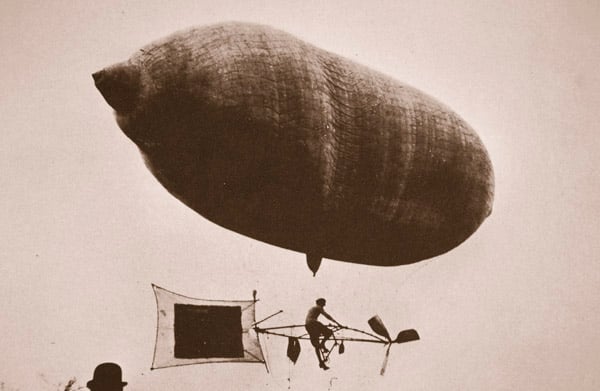
Sky cycle below a balloon, early 1900s American Photographer, (20th century) / Bridgeman Images
6. The steam man
Professor Moore dreamed that all tasks would one day be carried out by robots and set about building a mechanical man, made of steel and tin and powered entirely by steam, that would pull a wagon filled with commuters through city streets.
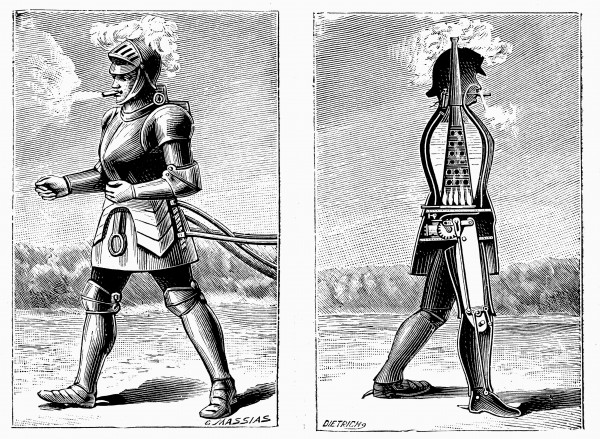
George Moore’s steam man. Petrol-fired boiler operated a 1/2 hp engine. Woodcut published London 1893. / Universal History Archive/UIG / Bridgeman Images
7. Water shoes designed for the military… but modelled by girls in bikinis
Five feet of buoyant foam that enabled an infantryman to forge streams and swampy terrain. We wonder why they didn’t catch on!
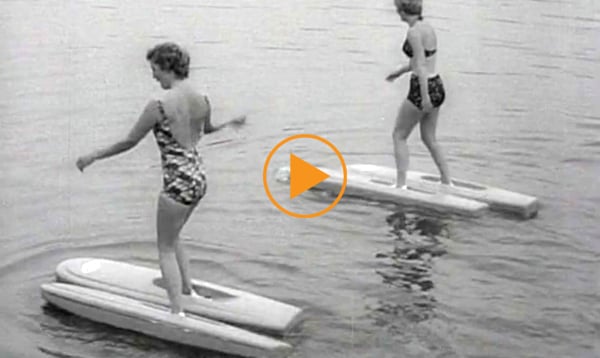
Water shoes designed for the military, USA, c.1950 / Bridgeman Footage
8. One-man submarine
A remarkable underwater craft, 9 1/2 feet long, invented by James Boler, Jr., gets its first tests in the San Francisco Bay.
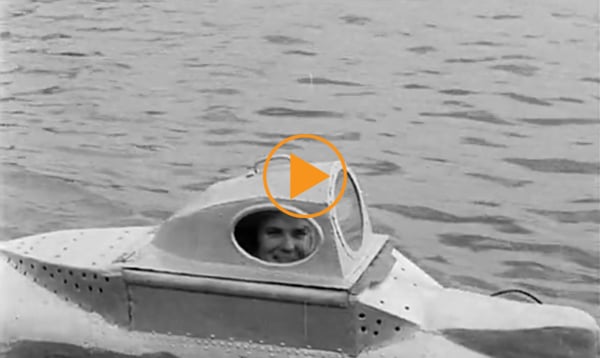
One-man submarine tested in San Francisco Bay, USA, 1930s / Bridgeman Footage
9. The air-conditioned suit
Keep calm and cool in a heat-wave with this ingenious device that works while you walk. In the 1930s one summer was so hot that it inspired the first “air-conditioned” suit, a queer arrangement of tubes supplying a breeze through the whole costume from bellows fastened to the wearer’s shoes.
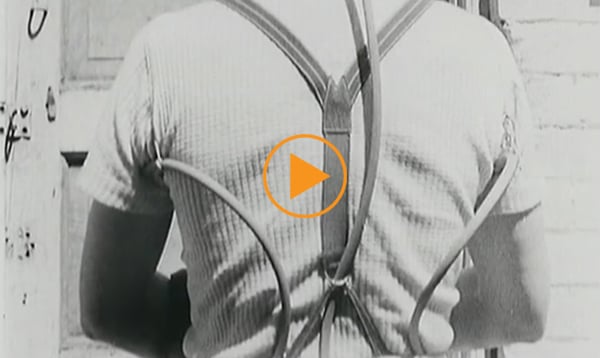 The air-conditioned suit invention, USA 1930s / Bridgeman Footage
The air-conditioned suit invention, USA 1930s / Bridgeman Footage
10. The jet pack
The U.S. Army began researching rocket pack technology in the late 1940s. Their goal was a back-mounted device that could propel a single soldier into the air, yet despite some success, it was scrapped when the military decided it didn’t fit the design parameters because it was too large and heavy. Virtually all jet packs developed ever since have been used primarily for thrill show demonstrations or stunt scenes in movies
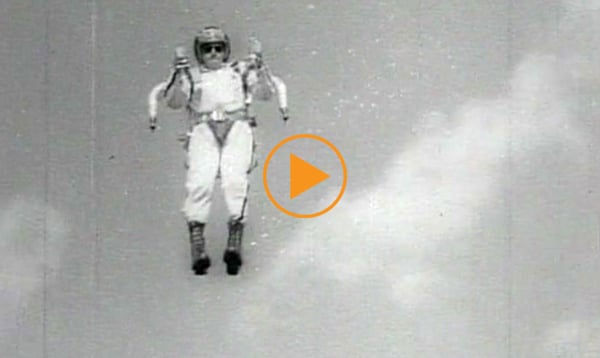
A US soldier demonstrates a new jet pack in France, 1950s
Find Out More
Contact the Bridgeman Sales Team at uksales@bridgemanimages.com for more information on licensing clips and images

